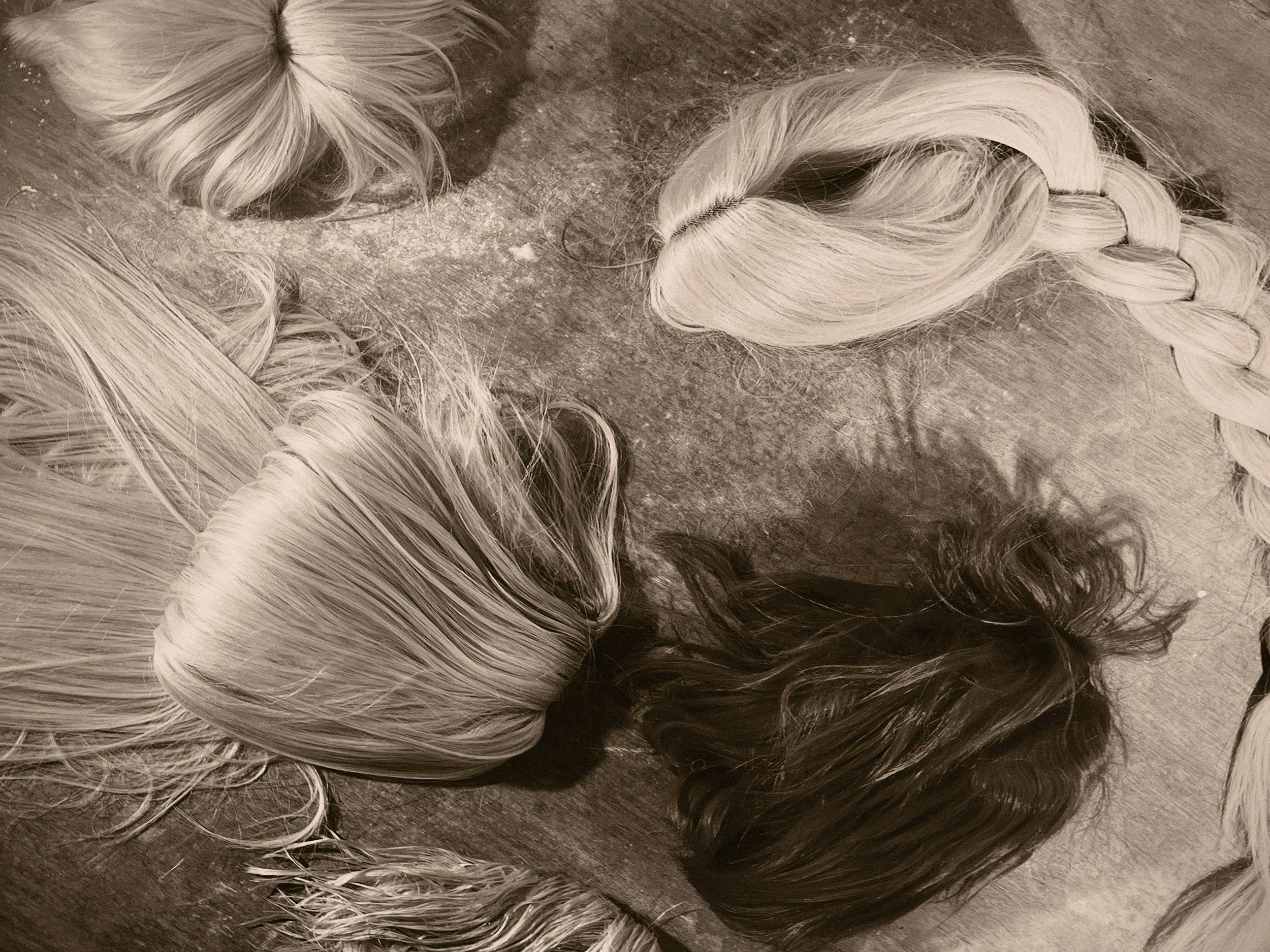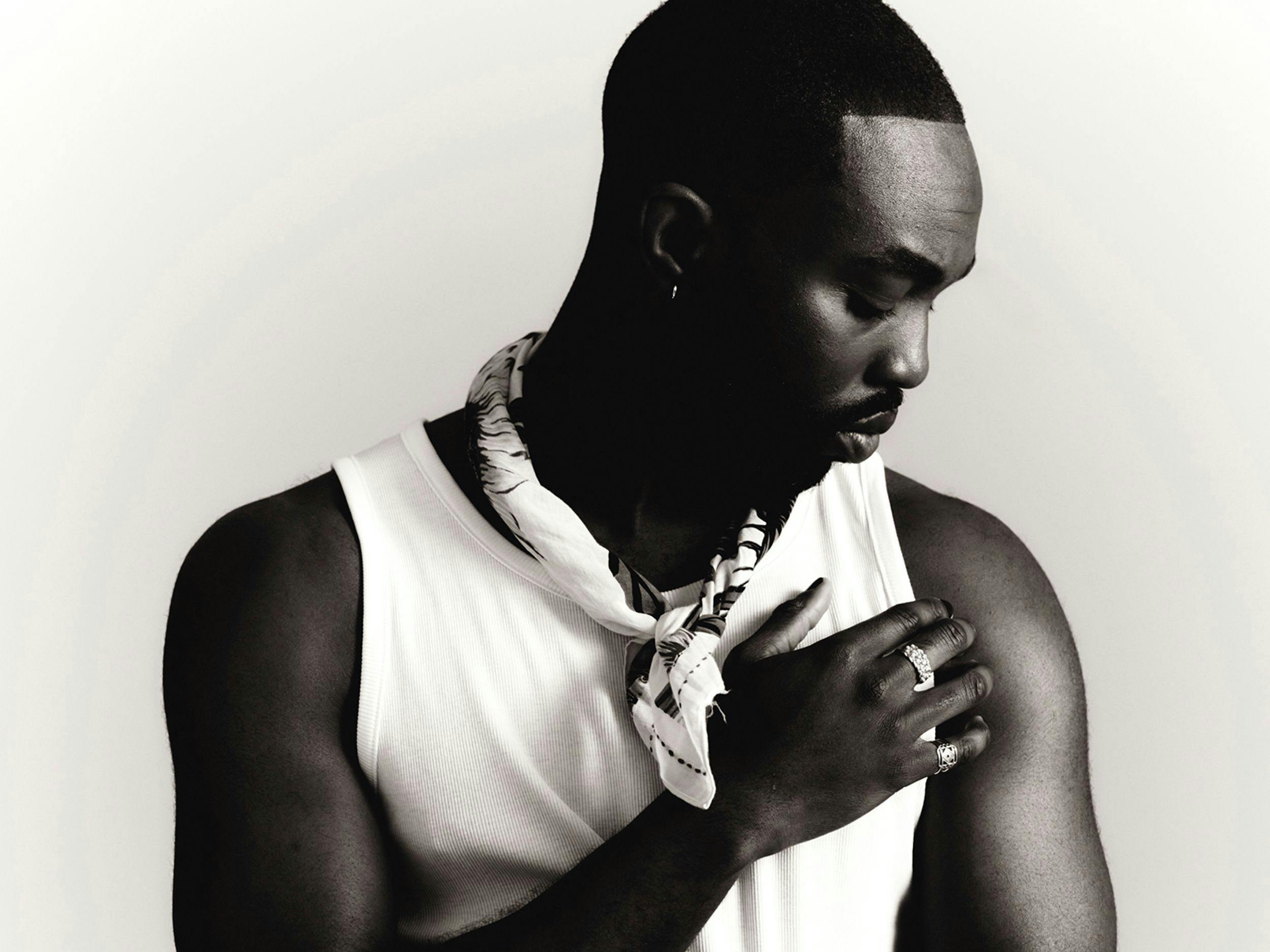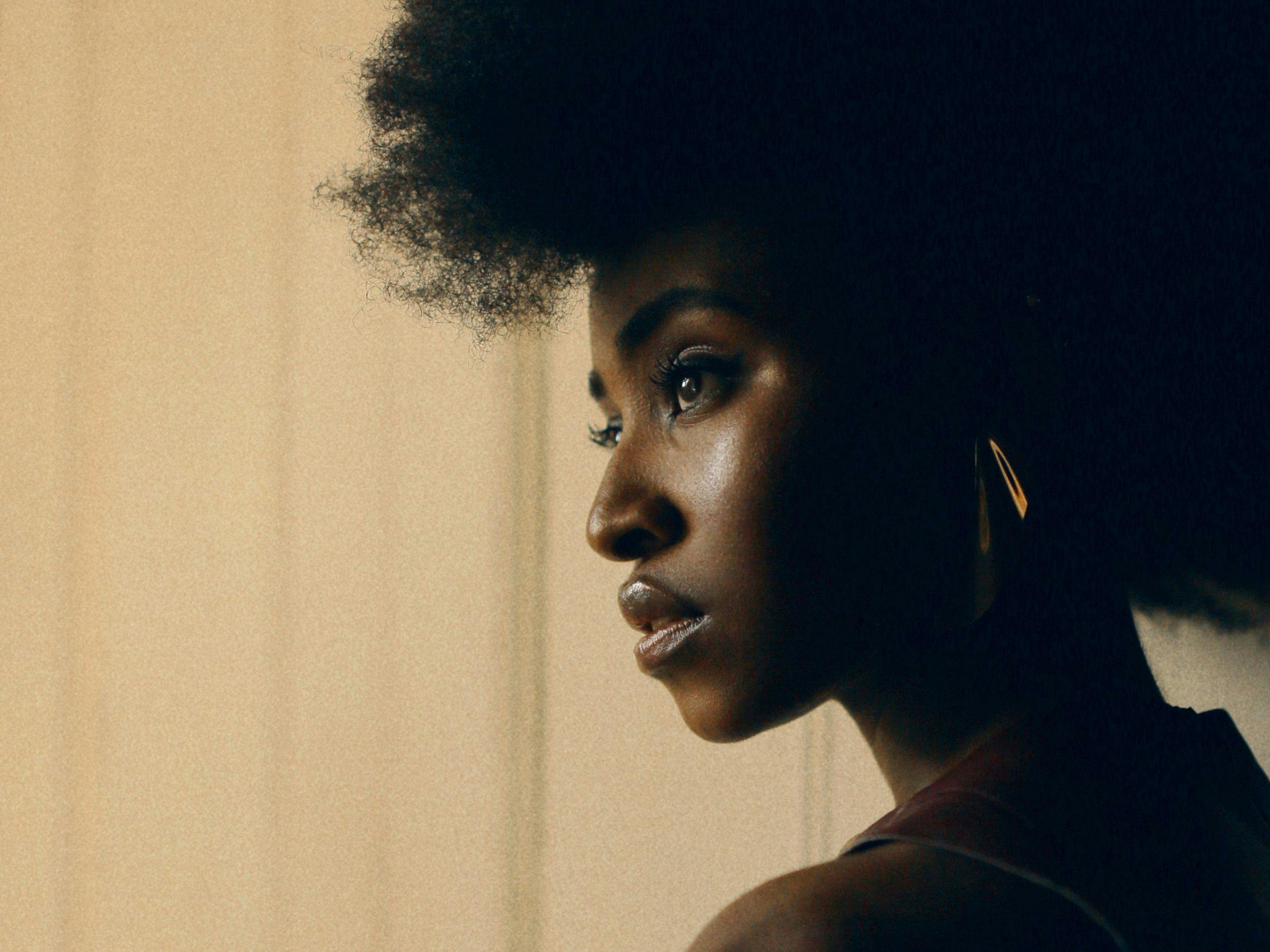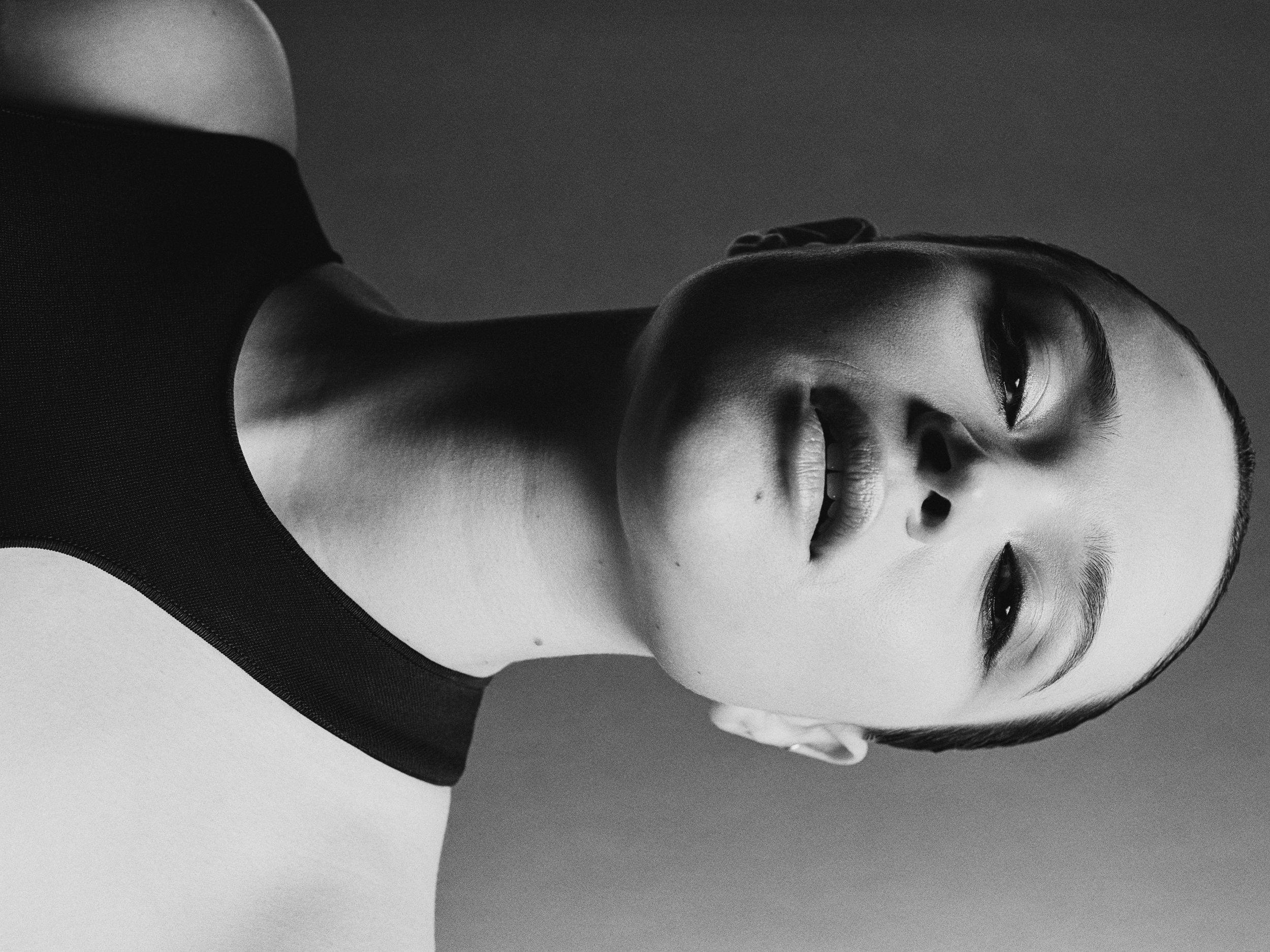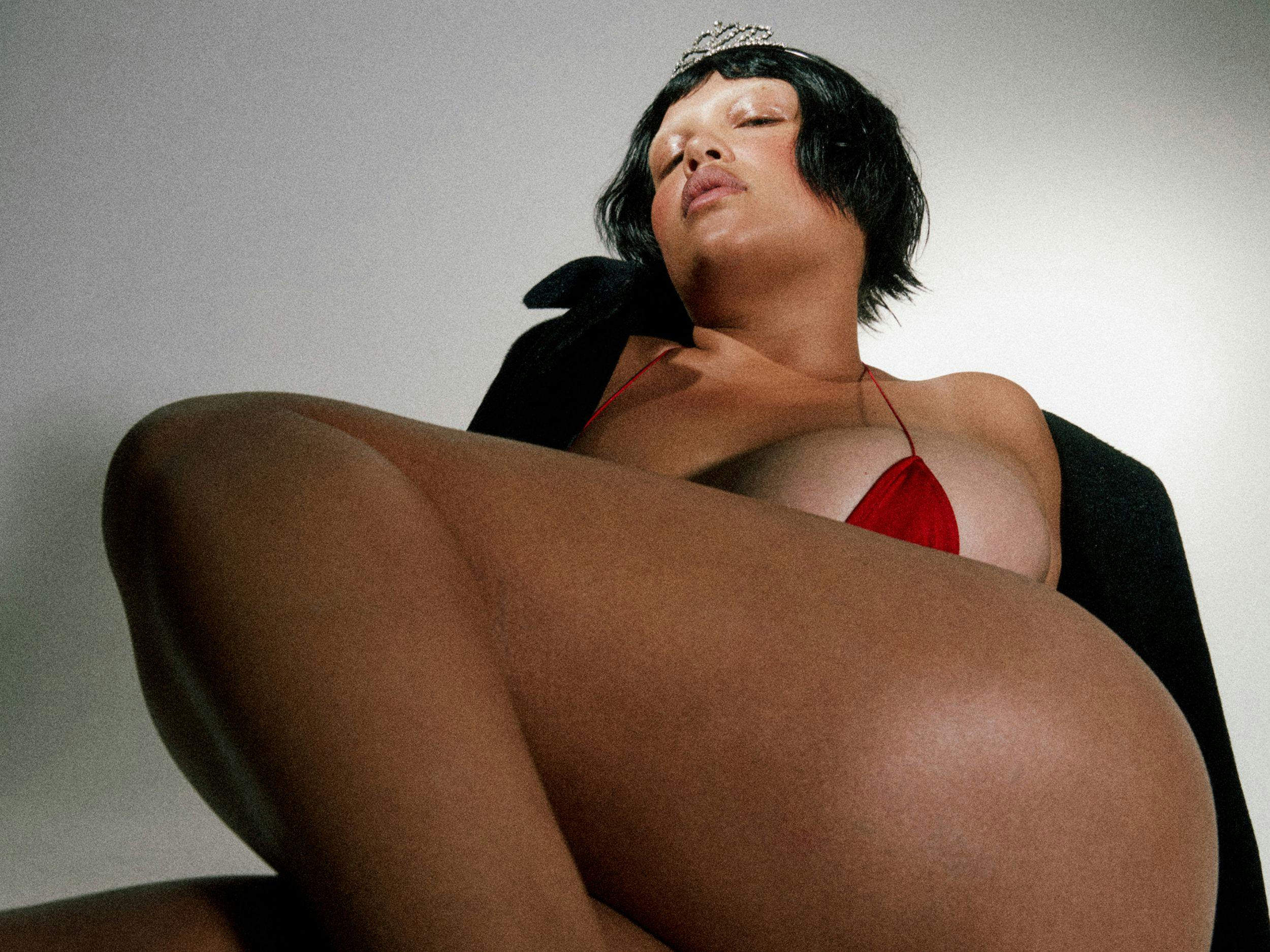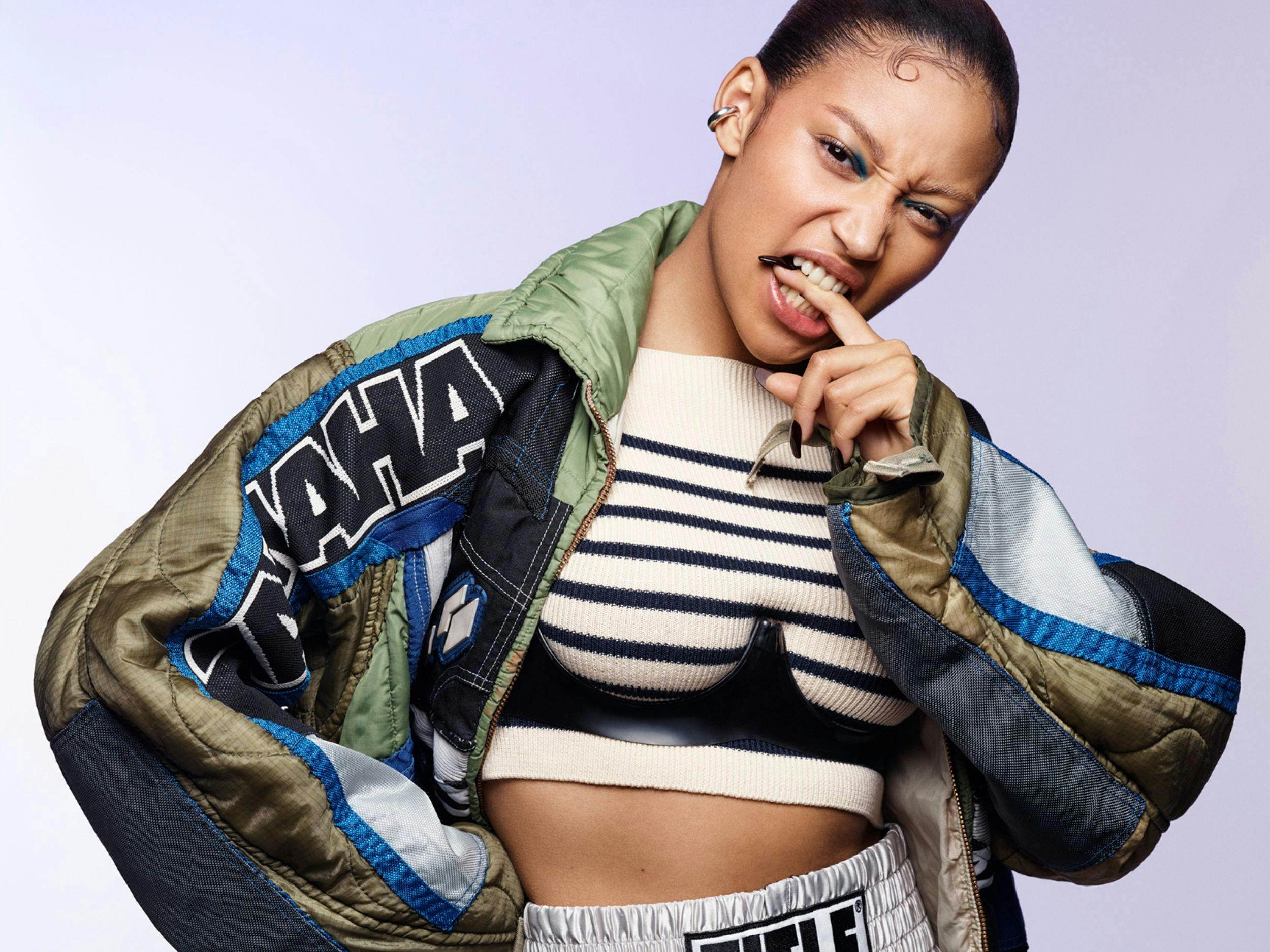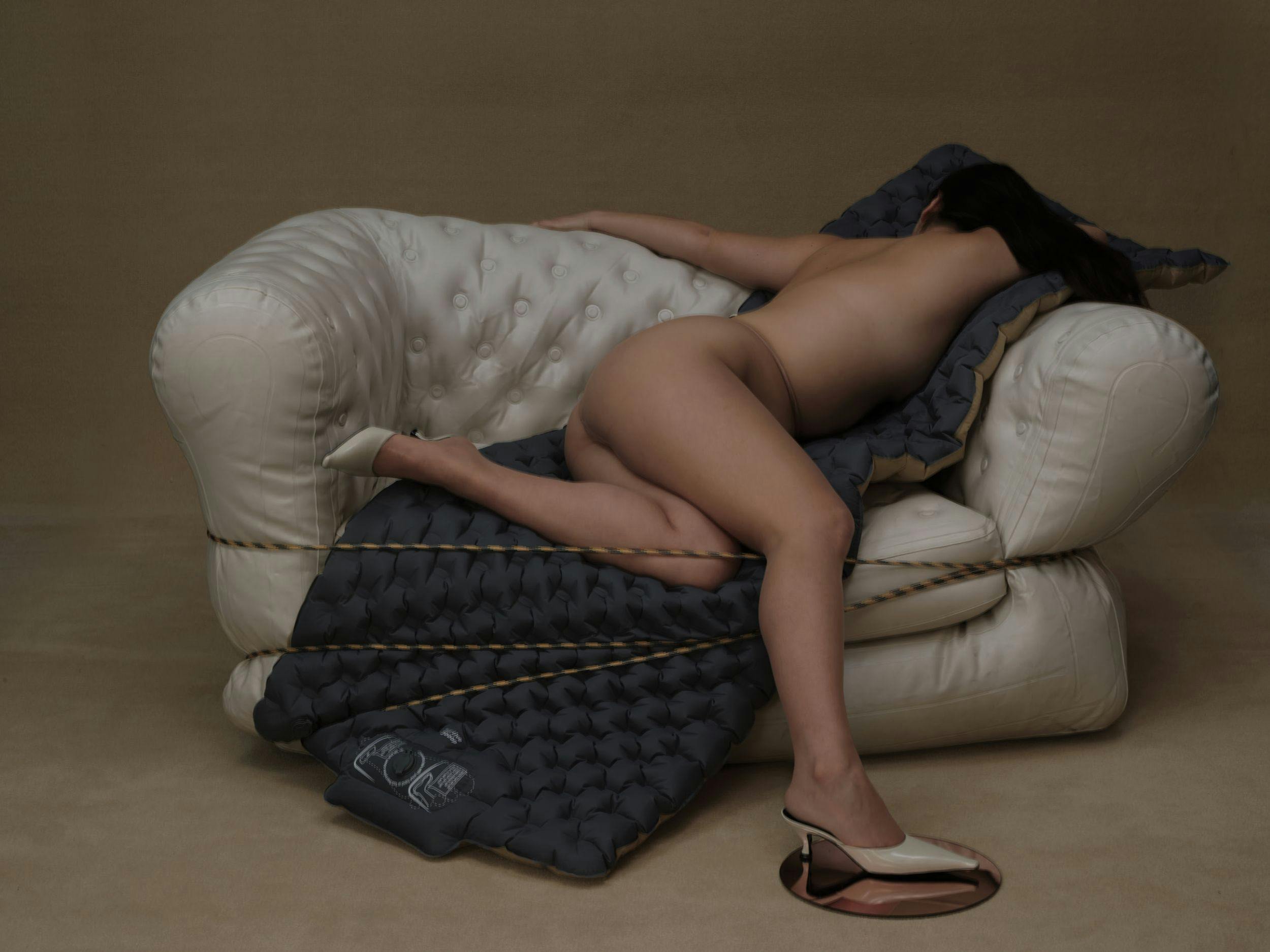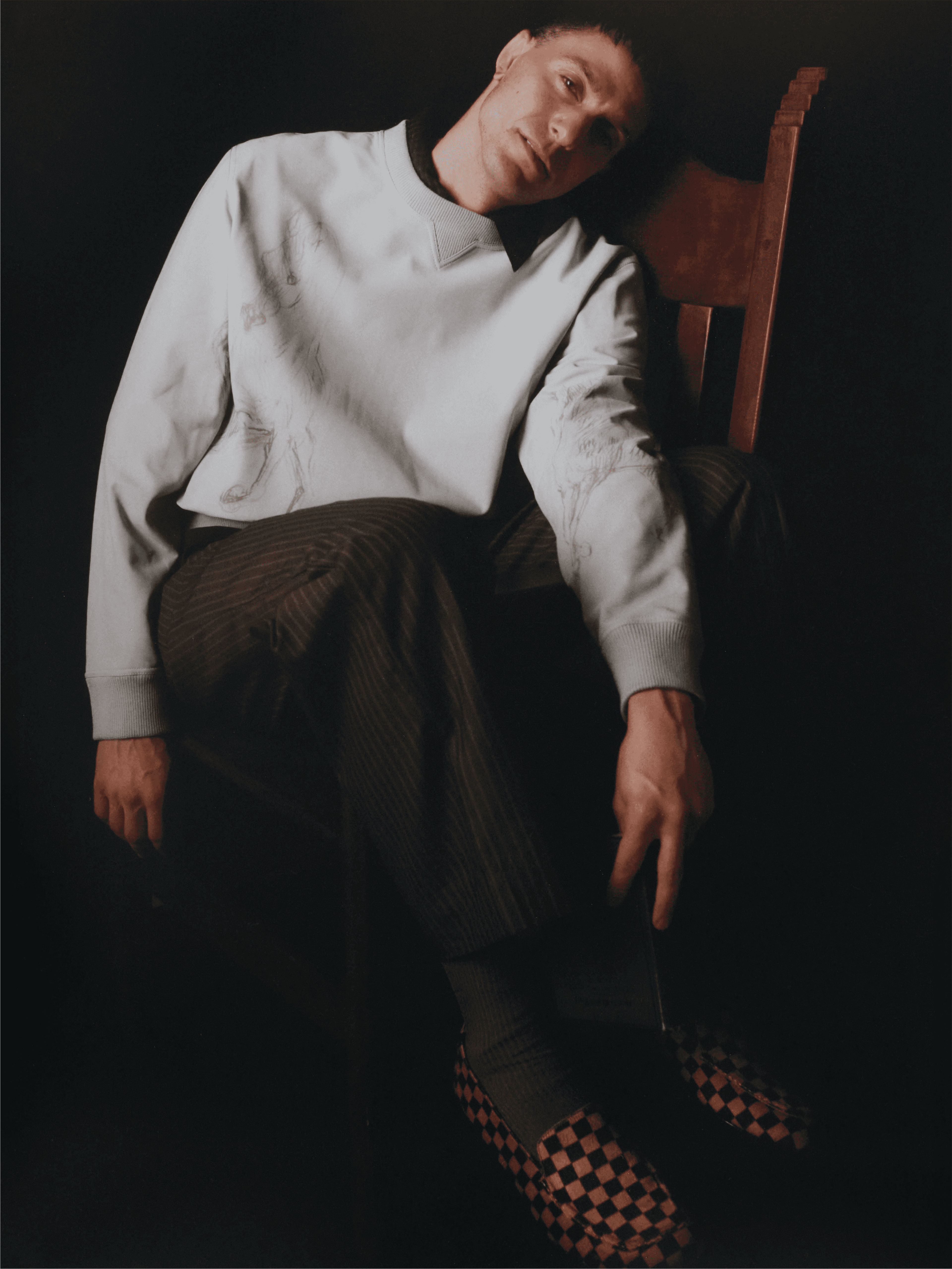
SWEATER by Hermès. SHIRT, PANTS, and SHOES by Maryam Nassir Zadeh.
Gideon Glick Knows What Matters
A few years ago, when Gideon Glick was auditioning for the role of the unconventional magician Alfie in The Marvelous Mrs. Maisel, he received some equally unconventional feedback from Amy Sherman-Palladino, the singular and beloved creator of that series as well as Gilmore Girls. “After my first read through, Amy went, ‘God, you’re weird,’” he laughs. “I immediately got so excited because I thought, ‘Oh, she sees me and she likes it.’ Weird was not a negative thing. What’s funny is when I finally met her in person at the first table read, she was like, ‘I’m really sorry that I called you weird,’ and I said, ‘No, actually I had a conversation with my therapist about how amazing it was.’”
For Glick, an unabashed, self-avowed “theater animal,” that weirdness is a prerequisite of sorts for being an artist, a calling for those who have decided to dedicate their lives and their selves to the act of creation. For Étoile, the new series created by Sherman-Palladino along with her partner Daniel Palladino, Glick used his personal experience to immerse himself in another art form that is known for being populated by idiosyncratic individuals, the world of ballet, one similar to his own—only more so. “I was a theater kid, I understand what it’s like to grow up in an insular world,” he explains. “Ballet is more insular than theater because you live and breathe it, but I understood what it meant to just be engrossed in an artistic universe from very early on. That’s where I come from.”
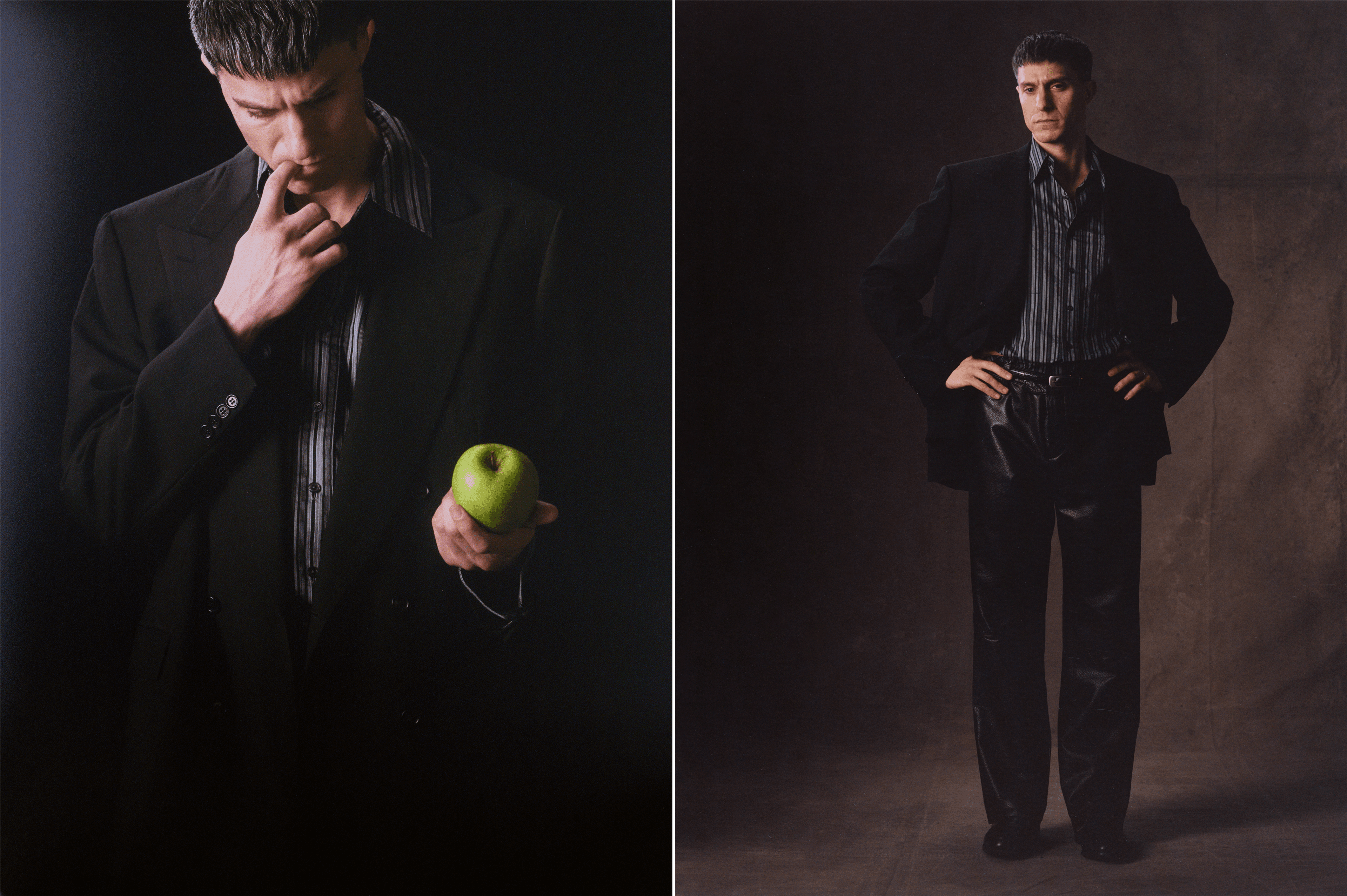
JACKET and PANTS, stylist’s own. SHIRT by Maryam Nassir Zadeh.
Étoile focuses on two of the world’s leading ballet companies (both fictional), the New York Metropolitan Ballet and Paris’s Ballet National, as they undertake an extravagant experiment to increase ticket sales by trading some of their leading artists for a season. In return for Lou de Laâge’s Cheyenne Toussaint, the Ballet National’s impassioned and brusque prima ballerina, the Metropolitan Ballet sends the neurotic choreographer Tobias Bell, played by Glick, to the French capital. Fans of Sherman-Palladino’s will find her signature rapid-fire dialogue and borderline-absurdist sense of humor filtered through a milieu that is ever cognizant of its centuries-long legacy yet here feels refreshingly contemporary. Cheyenne is a politically involved artist who confronts questions of agency and culture washing, as when she vocally protests the oil wealth funding the exchange, while Luke Kirby’s Jack McMillan and Charlotte Gainsbourg’s Geneviève Lavigne, the artistic directors of their respective companies, deal constantly with ballet’s place in the modern world.
Glick originally joined the project as a writer after he was approached by Sherman-Palladino and Palladino as Maisel was wrapping up. “They asked if I wanted to be a part of it and I said yes,” he recalls. “They said, ‘Would you rather be a writer or an actor?’ And I said, ‘I want to be both. I’m not going to choose one over the other, but acting is my first passion.’ I think they appreciated the candor because they thought most people would just lie just to get in the room. So I passed that test and then I said, ‘But I don’t want to give up acting,’ and they said, ‘Well, we’ll get you in front of the camera one way or another.’ I thought that just meant a guest spot or something. So I didn’t have high expectations about my participation in the show as an actor, but I was really excited to be involved as a writer.”
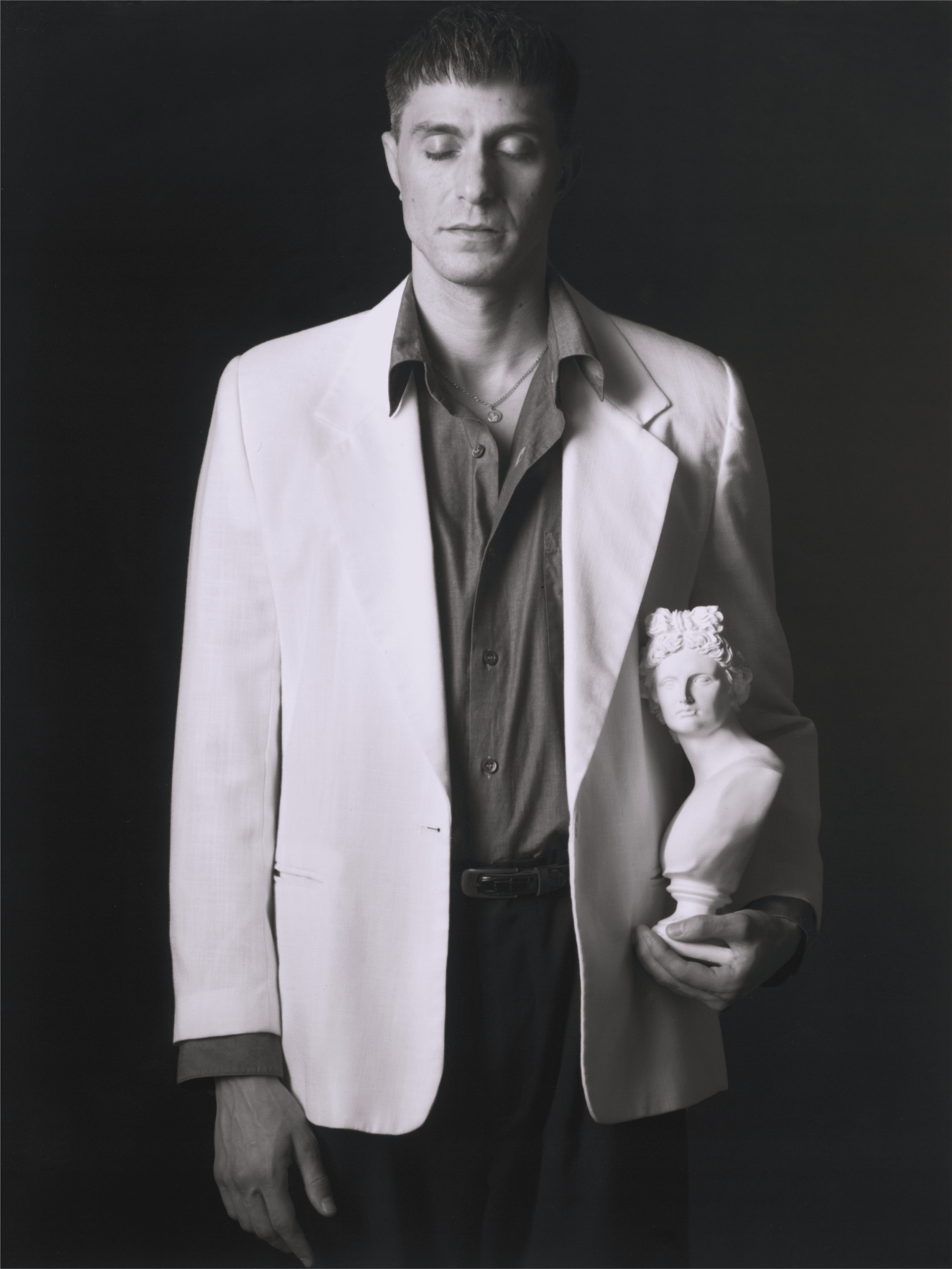
JACKET, SHIRT, and BELT, stylist’s own. PANTS by Maryam Nassir Zadeh.
As the writer’s room began work, however, Glick noticed an uncanny resemblance between himself and the character of Tobias, who is intensely focused and impassioned, but also lacks many standards of social decorum. “I see how they see me because I feel very seen by them,” he explains. “But they didn’t offer me the part until about a month into the room. Every time they talked about Tobias, they would gesture to me and look at me, and it was driving me crazy. I thought I was being punked in a way.” In his dual role both on and off screen, Glick says he has had to balance both sides of his creative ambition, as well as fit in among the larger team, led very much by Sherman-Palladino. “When we’re in the room and we’re talking about Tobias, I tend to get quieter because I don’t want my actor brain to take over and be like, ‘No, I want to do this or I want to do that,’ because actors are so selfish,” he laughs. “I find writing for them sort of like playing a character. I put on the Amy and Dan hat—and Amy has such fabulous hats—and I pretend to be them while writing because I’m writing in their voice. So, strangely, being an actor helped. I see the whole experience of writing for them and with them is that they are the fire and we are fanning the flames.”
In preparation for Étoile, Glick turned to both copious research, including attending our panel on diversity in ballet, and his own interactions with various choreographers, like Bill T. Jones, who worked on Spring Awakening, the hit Tony-winning 2006 musical that served as Glick’s Broadway debut. “I started from a macro view because I had to know a lot, I had to be immersed in it to have ideas about this world,” he explains. “So I did a lot of research, I went to a lot of ballet, I read about a lot of ballet, I shadowed Christopher Wheeldon. I watched so many documentaries, just to have an understanding of this world.” He lists Paul Taylor and Ulysses Dove as inspirations, along with Marguerite Derricks, who served as choreographer and consultant on the series: “The way that she weaves through dancers and she’s sort of like an animal on the prowl, I stole that, but I made him a little bit more introverted. We sort of consider ourselves a hive mind.”

SWEATER by Hermès. SHIRT, PANTS, and SHOES by Maryam Nassir Zadeh.
With the show’s release, Glick says he has been joyed to see how it has been resonating with audiences both inside and outside the ballet world. “I try not to be a person that reads reviews, and I do it every project. I say I’m not going to read reviews, and then hours later I read all of the reviews,” he laughs. “Maybe I’m a glutton for punishment.” He credits part of the appeal to its presentation of ballet as an art form that lives in the here and now. “I think the way that we shoot dance is really exquisite. I think it’s sexy, I think it’s fresh, I think it’s dynamic. I always believe that the only barrier to being a part of the arts is just accessibility. You can’t be a playwright if you’ve never read a play, and I think what makes me excited about this show is all of a sudden ballet is accessible. It’s something that people can see and say, ‘Oh, I like that,’ or, ‘I want to be a part of that,’” he adds. “It’s interesting in episode eight where Tobias deconstructs his dance and then it goes viral. I felt there was a meta thing going on because, for me, the show is about, ballet is not this esoteric thing that lives in these vaunted buildings. You can see it, it’s on your TV. You can go a couple blocks away and go watch it. When Tobias’s dance went viral, I thought, ‘Oh, this is what I like so much about the show, now ballet is in the zeitgeist, it’s in the lexicon.’”

JACKET, SHIRT, BELT, and SHOES, stylist’s own. PANTS by Maryam Nassir Zadeh.
Having come up through the theater (his other Broadway stints include Joshua Harmon’s celebrated play Significant Other and Aaron Sorkin’s adaptation of To Kill a Mockingbird), Glick is also now turning his focus to helping the next generation of artists with his new nonprofit queer play development lab Blue Roses Project, which he launched last month in New Orleans with his friend, the producer and director James Will McBride. “Right now, arts establishments are under attack and people are not getting funding, and queer voices are being marginalized,” he says. “Our hope is to find emerging queer playwrights, bring them to New Orleans, partner them with established directors, bring artists from outside of New Orleans to New Orleans to work with people in New Orleans to give back to the community and help it thrive, because it’s an extraordinary art scene. It’s also unlike any place on earth and it’s such a creative place to be. Our hope is to reinvigorate that and, especially, highlight queer voices.”
At a time when the arts are suffering from both a direct assault from the federal government and a more general apathy amongst the public at large, Glick says Étoile is a reminder of how crucial they are. “This is a show about keeping an art form alive, and I think for all these people, you see how vital it is and how much they’re willing to sacrifice for it,” he says. “It’s not even about ego, it’s actually that their identity is so entrenched in the thing that it is life or death because it matters so much to them. I think it’s important to tell those stories, and I think it’s important to see that art saves lives. As corny as it is, it saved my life. It gave me purpose, and I think the show touches on that.”
Étoile is now streaming on Amazon Prime Video.
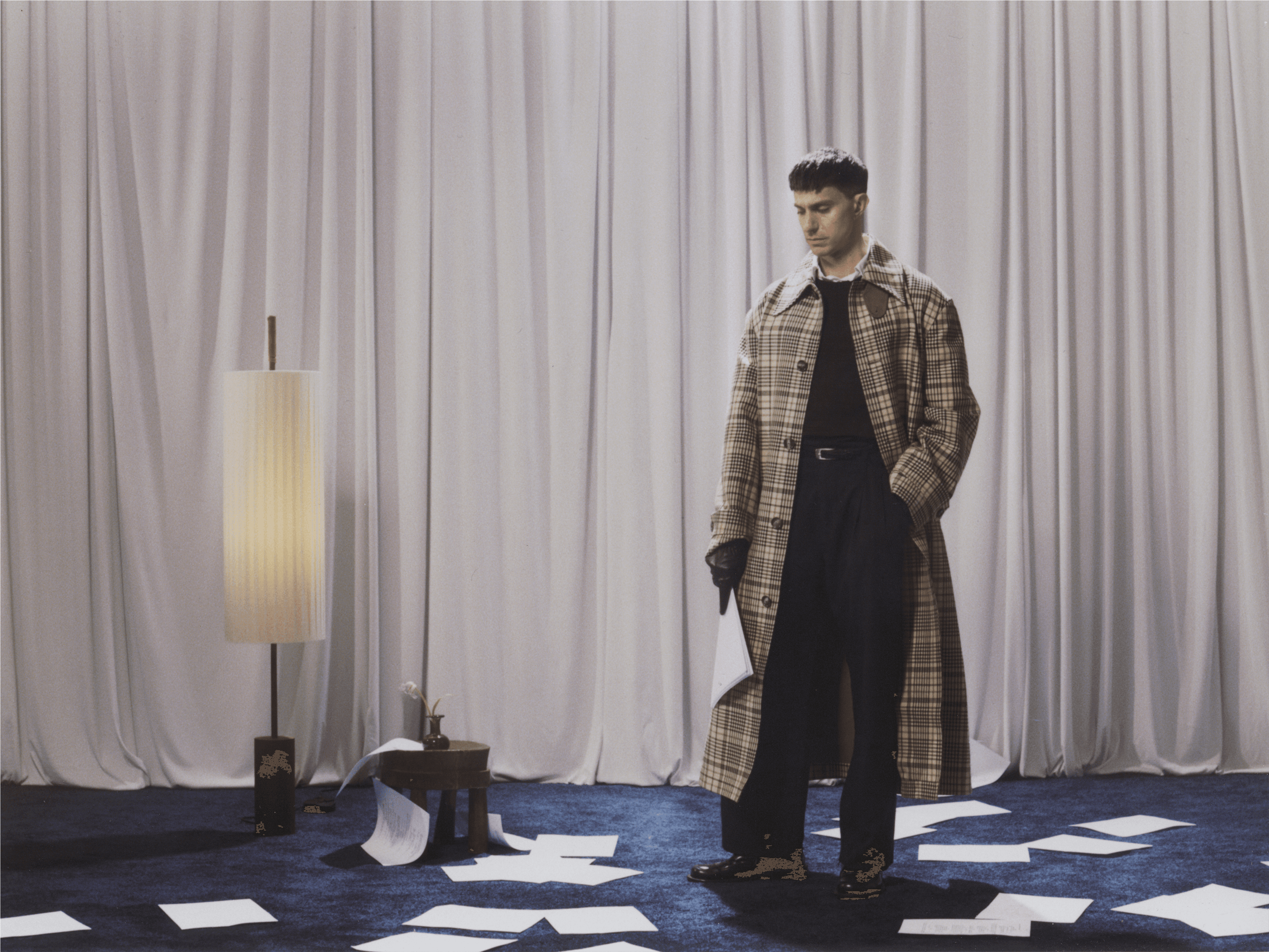
COAT by Ami Paris. SWEATER by Fendi. PANTS by Maryam Nassir Zadeh. SHIRT, GLOVES, BELT, and SHOES, stylist’s own.
As a nonprofit arts and culture publication dedicated to educating, inspiring, and uplifting creatives, Cero Magazine depends on your donations to create stories like these. Please support our work here.
